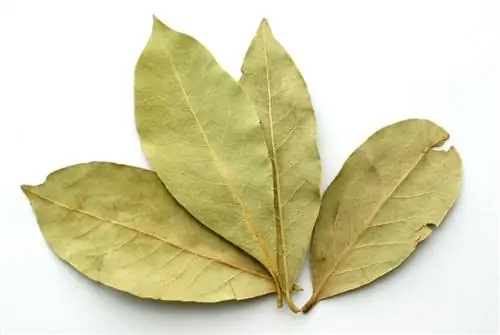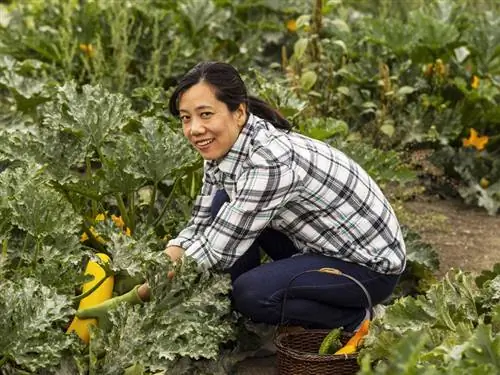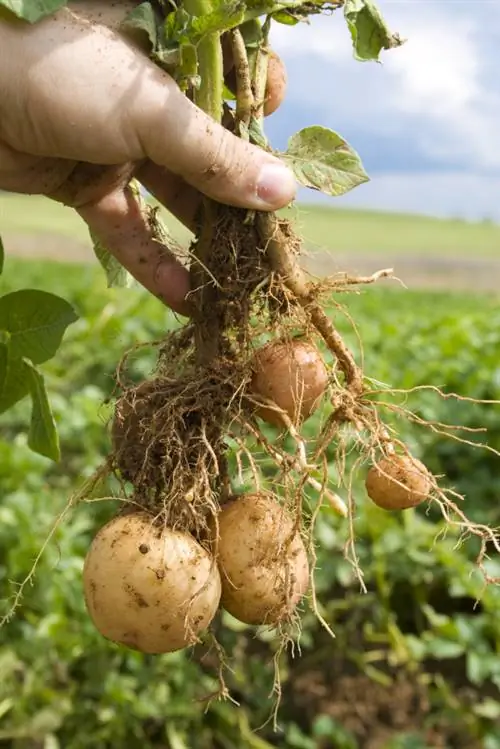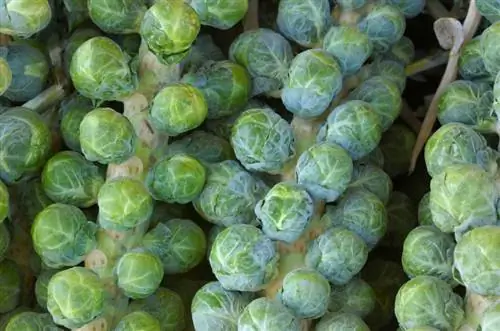- Author admin [email protected].
- Public 2023-12-16 16:46.
- Last modified 2025-01-23 11:20.
The heat-loving real laurel should not be confused with the so-called cherry laurel, as its leaves are poisonous. Bay leaves from Laurus nobilis, on the other hand, can be used in a variety of ways as seasonings and medicinal products.
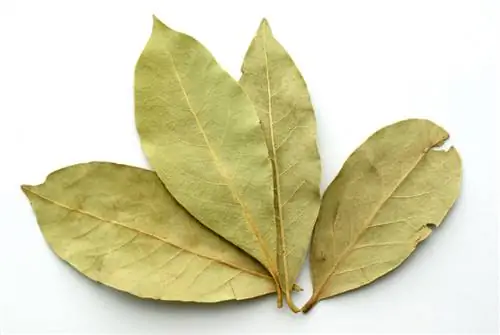
When and how should you harvest laurel?
Bay leaves should be harvested in spring or fall for the best flavor and optimal drying results. The leaves can be plucked individually or cut into branches and should be hung upside down to dry. After about one to two weeks they will be sufficiently dry and can be filled into spice jars.
The right time to harvest laurel
If you propagate laurel offshoots from cuttings or seeds for your own needs, you should, if possible, not harvest any leaves from the newly planted laurel bushes in the first year. If you initially allow the young plants to develop unhindered with a balanced supply of nutrients, then you can expect good yields from them for drying in the second year. You will achieve the best aroma and a good drying result if you cut individual leaves or entire bunches of branches in spring or autumn.
Harvest and store the laurel correctly
In mild locations in Central Europe it is also possible to overwinter the true laurel (Laurus nobilis) outdoors. However, electric hedge trimmers should not be used when cutting entire laurel hedges, as cut laurel leaves turn unsightly brown on the plants and pose a risk of disease. The leaves of the laurel are usually plucked by hand or cut as branches and bundled into bouquets and hung upside down to dry. If the bay leaves are sufficiently dry after about one to two weeks in a well-ventilated place, they can be filled into a spice jar as whole leaves. If stored appropriately, they will retain their full aroma for around one to two years.
The use of laurel in the kitchen
The use of laurel as a spice and medicinal plant has a tradition that goes back to ancient times. Today many recipes are refined with bay leaves:
- Soup broth
- Game dishes
- Pasta sauces
- Kebab skewers
- Lamb
- Beef stew
In many recipes, the bay leaves are only added during the cooking process to transfer the flavor and then removed before consumption.
Tips & Tricks
You can also use fresh bay leaves directly, but you have to be much more careful with the dosage than when using dried bay leaves.

